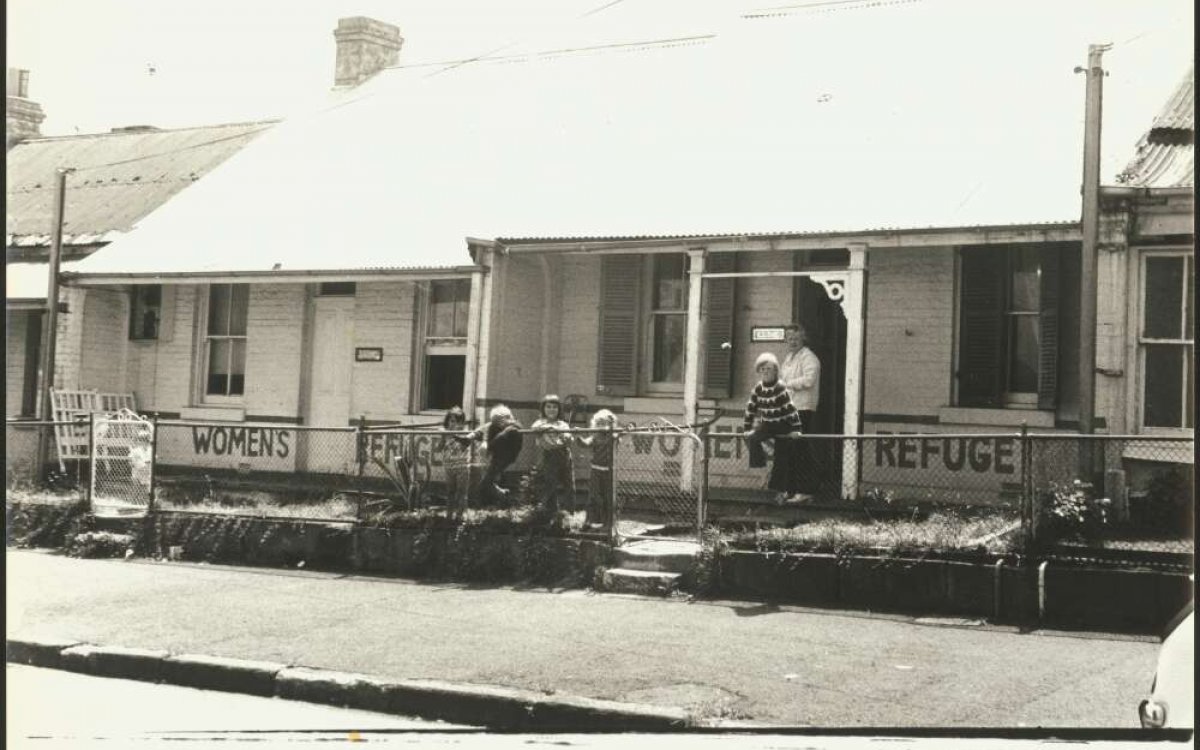Due to scheduled maintenance, the National Library’s online services will be unavailable between 8pm on Saturday 7 December and 11am on Sunday 8 December (AEDT). Find out more.

FIRST FULLY AUTOMATIC WASHING MACHINE THAT DOES NOT NEED A HOT WATER SYSTEM (1955, February 9). The Australian Women's Weekly (1933 - 1982), p. 52. http://nla.gov.au/nla.news-article51940024
The second half of the twentieth century brought technological change and Second Wave feminism, challenged stereotypes and changing the aspirations and lives of many women.
By the middle of the twentieth century, a technological revolution had begun in the home. Labour-saving devices such as washing machines and kitchen appliances offered women release from long hours managing a household and family. This meant that women could consider work, study full participation in public life.
Where First Wave feminists had fought for voting and property rights, Second Wave feminism in the 1960s and 1970s focused on consciousness raising, and tackled more personal experiences and inequalities such as rape, domestic violence, reproductive rights (abortion and contraception) and sexuality.
Listen to Michelle Arrow speak about the importance of the 1970s in reshaping the public meaning of private lives:

Modjeska, Drusilla. (1974). Six children play in the front yard of the Elsie Women's Refuge supervised by a woman, Glebe, 1974 [picture] / Drusilla Modjeska. http://nla.gov.au/nla.obj-145054347
With the passing of the Federal Childcare Act in 1972, the regulation and funding of childcare organisations by the Federal Government improved the standards and availability of places in childcare and further released women from the home to pursue other opportunities. Maternity leave was introduced in 1973, meaning that some women could keep their jobs and pursue a career after having children.
Women’s refuges began to appear in the 1970s, offering shelter to women and children fleeing domestic violence and rape. Violence against women and sexual harassment was brought out from the private sphere into the public arena. Two grassroots Women’s Commissions were held in 1973 and 1974 in Sydney. They gathered testimony from hundreds of women about Women as Mothers, Women as Workers, Women and Marriage, Women as Sex Objects, and other forms of discrimination. They were followed by a Royal Commission on Human Relationships in 1977, which looked at the nature of families, gender and sexuality in Australia.
The sisterhood speaks out, sharing their experiences. Michelle Arrow tells us about the rise of consciousness-raising, as well as Anne Summers’ role is starting the first women’s refuge
In literature and the arts, new themes emerged that propelled and deepened feminist discourse. Germaine Greer’s The Female Eunuch, published in in 1970, sought to reclaim women’s sexuality and release them from the consumerist suburban homes that, she argued, were their prisons. Despite much criticism, the book became a flagship text for change as women began to consider their own sexuality.

Hennessy, Brendan. (1988). Germaine Greer holding newspapers, 1988 / Brendan Hennessy. https://nla.gov.au/nla.obj-149859225
In 1975, Anne Summers’ book Damned Whores and God’s Police brought to light, for the first time, women’s experiences of sexual harassment, domestic violence and date rape. It sought to dismantle long-held stereotypes about women. In the same year, legislation enabling no-fault divorce meant women could more easily leave unhappy marriages.
The introduction of birth control, via the contraceptive pill in 1961, gave women freedom across two key areas targeted by Second Wave feminism: sexuality and life outside the home. The pill enabled women to exercise more control over how many children they had, and when, giving them personal choice and control over their own bodies. By giving women this choice, the pill, along with abortion rights, became symbols of the liberation sought for women by the second wave feminist movement. Women could be more than mothers and housewives—they could be fulfilled, independent citizens contributing to public life.
Activities
- Divide the class into five groups and allocate a decade between the 1940s and 1980s to each group. Using Trove, have students explore advertisements in The Women’s Weekly from that decade. Compare them with advertisements in current magazines, including The Australian’s Women’s Weekly. How have the depictions of home life changed over time? Would the advertisements of previous decades be considered offensive today? If so, to whom, and why?
- Consider the experience of Rosie Batty, named Australian of the Year in 2015. Have any other women or men working for women’s rights been nominated Australian of the Year? If so, what were their contributions? Research women who have been named Australian of the Year, and their contribution to their chosen fields.
- Conduct a survey in class to establish the home dynamics of students and their peers. The survey can be anonymous, if students wish. Ask the students to come up with questions such as: which parent works, etc? Then map these as a percentage?. Discuss the results. What do they reveal about the roles of men and women? Has equality been achieved?


